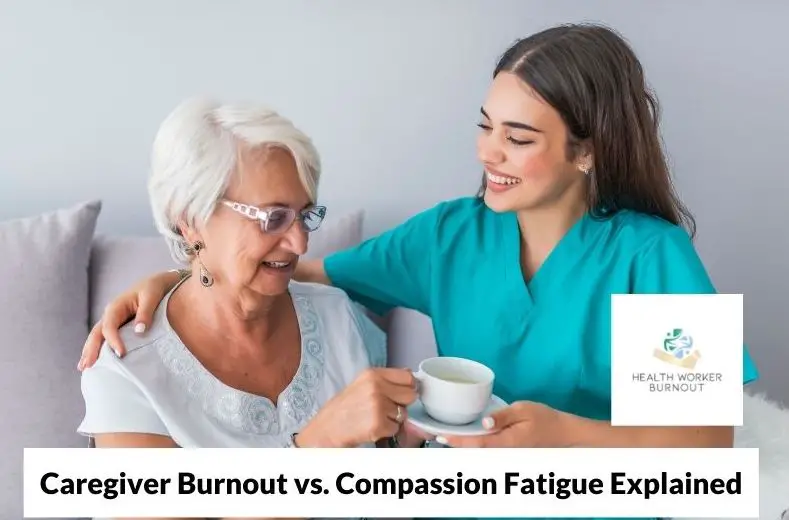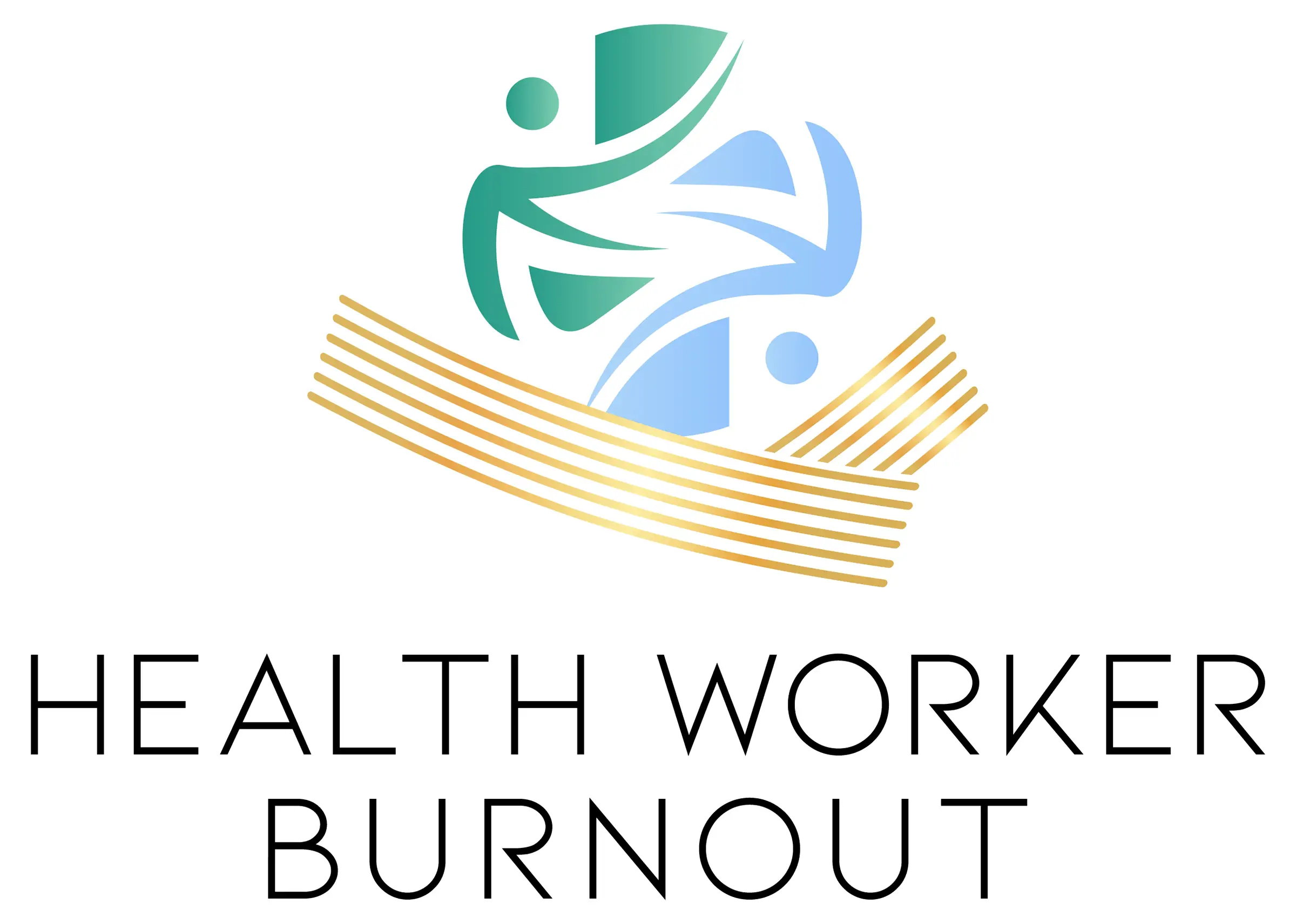Caring for others is as noble of a profession as you can find. Whether you are a hospice worker, a nurse, a therapist, or any other of a number of caregiving professions, you may be experiencing the overwhelming exhaustion of caregiver burnout or the isolated stress of compassion fatigue. While these two terms share many overlapping similarities, they also differ in many ways.
This is how caregiver burnout and compassion fatigue compare:
| Caregiver Burnout | Compassion Fatigue | |
| Symptoms | Exhaustion, frustration, body aches, depression | Anger, depression, weight change, isolation |
| Progression | A slower breakdown of morale | A sudden development |
| Empathy | Empathy is still present but may be diminishing | A complete loss of empathy |
Understanding what emotional and physical responses your body is having to the stressors of work can help you determine which stage you are going through. Keep reading to identify the symptoms you may be experiencing and prevent them from progressing into a more significant problem.
Are Caregiver Burnout and Compassion Fatigue Similar?

With caregiver burnout and compassion fatigue on the rise in today’s society, there’s been more and more research on the topic. One study relates compassion fatigue to feelings of “anger, depression, and apathy.” This apathy is the main difference between caregiver burnout and compassion fatigue.
Whereas caregivers experiencing burnout can still empathize through their weakened state, caregivers experiencing fatigue struggle to do so. Fatigue may also be a sudden change in emotional behavior. On the other hand, burnout is found to be a continuous progression over time. Another difference is the cause. While burnout may be related to the conditions of the workplace, fatigue is directly related to the caregiving work itself.
While these identifiers may classify burnout and fatigue into two different categories, both conditions share many of the same symptoms.
Feelings of exhaustion, anger, depression, sleeping too much or too little, and over/undereating are all symptoms commonly attributed to both caregiver burnout and compassion fatigue. These symptoms are often the reason why both terms are sometimes used interchangeably.
Who Is at Risk for Compassion Fatigue and Caregiver Burnout?
The word “caregiver” is a broad term that encompasses many different careers and jobs in the caregiving industry. Some examples of careers that could put you at risk for experiencing compassion fatigue are:
- Family caregiver
- Long/short-term facility caregiver
- Nurse
- Doctor
- Hospice worker
- Paramedic
- Police Officer
Hundreds of careers both inside and outside of the healthcare industry are at risk for both compassion fatigue and caregiver burnout. In fact, almost 74% of genetic counselors experience compassion fatigue at some point in their careers.
It should be known that the people that identify with occupations on this list are not the only people who should be wary of compassion fatigue. If you are exposed to another person’s trauma in some way regularly, you are at risk for both caregiver burnout and compassion fatigue.
Why Do I Feel Caregiver Burnout or Compassion Fatigue?
Both caregiver burnout and compassion fatigue are often found in individuals that work closely with people suffering through some sort of trauma. This explains why compassion fatigue is also often referred to as secondhand trauma. The American Psychological Association found that people experiencing compassion fatigue “can become so over-empathic that they find themselves growing numb to their patients’ suffering.” This numbness results in losing patience and ultimately losing empathy for the people under your care.
Of course, it is not only people in the healthcare industry that can develop caregiver burnout or compassion fatigue. First responders like police officers or firemen, therapists, counselors, or even family members of someone experiencing terminal illness or another form of trauma can develop symptoms.
Symptoms may even arise if you find yourself being the friend that people come to for advice or guidance through their problems or stress. If you are constantly taking in others’ stress and don’t have an outlet for your own, you may very well be experiencing burnout or fatigue.
Recognizing and Preventing Caregiver Burnout
Recognition and prevention are key in ensuring caregiver burnout doesn’t take a permanent toll on your life. Along these same lines, early intervention is equally as important. Recognizing the symptoms and stopping them before they get to be a problem is your best defense.
If you want to take preventative measures to fight against caregiver burnout, it is vital to recognize the symptoms you may be experiencing. Some of the symptoms commonly found in cases of caregiver burnout are:
- Physical/emotional exhaustion
- Irritability, shortened temper
- Frustration
- Body aches
- Depression
- Loss of interest in work that was once enjoyable
- Loss of interest in things outside of work, like hobbies
Being overworked into these conditions is difficult to endure. However, admitting that something seems off and researching symptoms and treatments is an important step. Now that you can recognize some of these changes as symptoms, you can start preventative measures to get in front of the problem and fight against caregiver burnout.
Some ways to prevent burnout are to take breaks, know your limits (mentally and physically), ask for help, exercise, and get enough sleep.
These are just some useful ways to give your brain the rest and the care that it needs to provide the attention needed to conduct yourself properly in a caretaker role. Proper diet, journaling, and educating yourself on the dangers of overworking are also productive measures.
Recognizing and Preventing Compassion Fatigue
While caregiver burnout and compassion fatigue share many similar symptoms and treatments, it is crucial to understand the symptoms that separate the two emotional states. Some common symptoms of compassion fatigue are:
- Apathy
- Worsening relationships
- Isolation
- Sleep loss
- Weight fluctuation
Due to the self-doubt that compassion fatigue brings, close friends, family, or patients may see signs of compassion fatigue before you do. Therefore, it is important to have a network of support you can turn to in times of need. If others start noticing a change in your behavior or demeanor, it may be a sign that fatigue has begun.
If you are experiencing some symptoms of compassion fatigue, there are ways to prevent it from progressing. Taking time away from caring, such as a vacation or even indulging in something you enjoy, can make a massive impact on the symptoms of fatigue.
Allowing others to help you is also important. If a loved one notices a change in you, trust that they are coming to you in your best interest. Seeking care on your own in the form of therapy or counseling may also reinvigorate the importance of compassion in your life.
Conclusion
Caregiver burnout and compassion fatigue are concepts that are becoming more prevalent, especially in the healthcare industry. While the distinction between the two is an important one, the importance put on the treatment and strategies to manage them should take larger precedence.
If the resentment that appears due to these conditions is allowed to fester, the care you provide suffers, along with you and your patient or client.
You owe it to yourself and the people receiving your care to attempt to recognize these signs and to seek out help to resolve them. Self-care is a vital part of being in the caregiving industry. If you are given the responsibility to care for others but fail to care for yourself, you are not giving your patients or clients the best care that you are capable of.
Invest in yourself and your mental and physical health so that you can protect against the dangers of caregiver burnout and compassion fatigue.
Content Disclaimer
The information contained above is provided for information purposes only. The contents of this article are not intended to amount to advice and you should not rely on any of the contents of this article. Professional advice should be obtained before taking or refraining from taking any action as a result of the contents of this article. HealthWorkerBurnout.com disclaims all liability and responsibility arising from any reliance placed on any of the contents of this article.
Copyright Notice
These works are protected by copyright laws and treaties around the world. We grant to you a worldwide, non-exclusive, royalty-free, revocable licence to view these works, to copy and store these works and to print pages of these works for your own personal and non-commercial use. You may not reproduce in any format any part of the works without our prior written consent.
Copyright © 2022 HealthWorkerBurnout.com
Sources
The American Psychological Association

3 comments
Comments are closed.